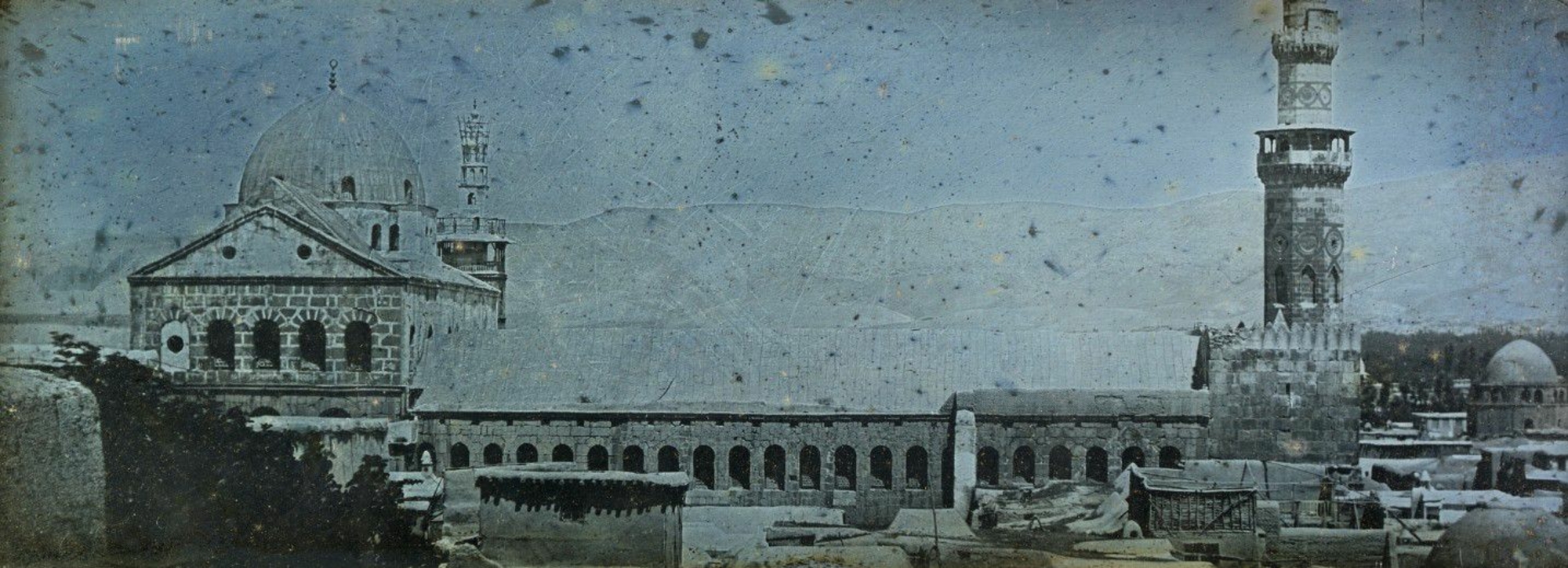
- Home
- Explore the site
- A mosque at the heart of the city
- A place of worship since Antiquity
The Temple of Damascene Jupiter
A temple dedicated to the cult of Hadad was built in a vast space at the heart of the Aramean city of Damascus, between the 10th and 9th centuries BCE. When the city came under Greek influence and then Roman rule, the site was rebuilt and dedicated to the cult of Jupiter.
On a vast esplanade, the agora, stood the temenos enclosed by a portico flanked at each of its four corners by a square tower. A monumental entrance was built on the eastern side, along with two others, on the north and south sides, opposite two domed aedicules. The temple cella was erected in the eastern half of this inner courtyard.
The Church of St John the Baptist
In the 4th century, the site was Christianized and converted into a church. The crowded agora was incorporated into the urban fabric. Colonnades linking the ancient gates of the agora wall and of the temenos created monumental thoroughfares around the church, which connected to several religious and administrative buildings. The church seems to have been built against the southwest corner of the temenos wall, with the relics of the head of St John the Baptist placed in an aedicule next to the chevet to the east, or inside, depending on the dimensions of the basilica in question. The southwest corner tower, the future Minaret of Qaitbay, was probably used as a bell tower.
The great mosque
Muslims initially used part of the portico of the ancient temple as a place of prayer, and allowed the Christians to continue using the church. The portico faced south, towards Mecca, and worshippers lined up in parallel rows facing the qiblah for prayer. As the inhabitants were gradually converted, parallel rows of supports were added to enlarge the prayer hall, until caliph al-Walid I ordered its transformation into a vast mosque in 705. The relics of St John the Baptist, including the head of the saint, which was buried here, remains in the new mosque to this day, housed in a small aedicule in the prayer hall.


